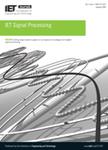版权所有:内蒙古大学图书馆 技术提供:维普资讯• 智图
内蒙古自治区呼和浩特市赛罕区大学西街235号 邮编: 010021

作者机构:Harbin Engn Univ Coll Informat & Commun Engn Harbin 150001 Peoples R China Dalian Naval Acad Dept Informat Syst Dalian Peoples R China
出 版 物:《IET SIGNAL PROCESSING》 (IET Signal Proc.)
年 卷 期:2022年第16卷第9期
页 面:1071-1084页
核心收录:
主 题:autoencoder deep learning HRRP neural network subband fusion
摘 要:A novel algorithm for multi-subband signal fusion achieves performance superior to traditional all-pole model, matrix pencil algorithm and deep-neural-network (Deep neural network (DNN)). The method uses a deep-learning autoencoder more fully described as a multi-subband fusion autoencoder (MSFAE). This autoencoder comprises two parts: a multi-subband encoder and a full-band decoder. Full-band echo distance envelopes are used as training data for the full-band autoencoder, to obtain the full-band coding and the full-band decoder. Then, the multi-subband echo distance envelopes are used as training data, and the full-band coding is used as labels, to train the multi-subband encoder. Finally, the multi-subband encoder and the full-band decoder are combined to obtain the MSFAE. The multi-subband distance envelopes are input to the MSFAE to obtain the full-band distance envelopes, improving the radar distance resolution and obtaining high-resolution range profiles. In contrast with the traditional all-pole model and matrix pencil algorithm, the authors MSFAE directly processes the information in the frequency domain, avoiding the error of pole estimation in the echo domain. In contrast with DNN, the authors MSFAE needs only multi-subband distance envelopes as input, avoiding noise subband redundancy. The experimental results show that the fusion accuracy of MSFAE is higher than the traditional all-pole model, matrix pencil algorithm and DNN. The MSFAE has superior performance using the fusion method, even at low signal-to-noise ratio.